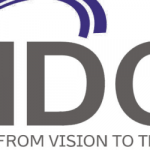The Search for ‘Quantum Advantage’ Advances in Europe & China
(CosmosMagazine) Two new studies suggest researchers may be getting closer to achieving “quantum advantage”, the point at which quantum computing can solve a problem that no classical computing can in a feasible amount of time – that is, solve a problem that is otherwise computationally impossible.
In Europe, Danish and German researchers have built a chip that is a promising advancement in the race to build the world’s first photonic quantum computer, while a team from China used an unusual experimental set-up to demonstrate quantum advantage for the second time ever.
The first study describes the development of a nanochip less than a tenth the width of the human hair yet capable of producing hundreds of stable photons, the fundamental particle of light, that can be used to store huge amount of data – and therefore form the hardware of quantum computers, like transistors in today’s computers.
Practically speaking, reaching this milestone involves simultaneously controlling at least 50 quantum bits. Most big players in the quantum race today – like Google, IBM and Microsoft – have instead been focusing on using superconducting architectures, such as Google’s 53-qubit Sycamore chip.
“One key difference between the two architectures thus becomes how information is detected, transmitted and manipulated, and the second is the speed. Optical frequencies are significantly higher and have the potential for an overall faster operation – similar to the difference between the classical copper telecommunication network and the fibre network for the NBN.”
Photonic computing is again near the top of the candidate list for quantum computation, thanks to several advances over the past few years – including more efficient photon detectors, improvements in single photon sources, and breakthroughs in novel ways to prevent errors when encoding qubits.
In fact, a team led by Jian-Wei Pan at the University of Science and Technology of China in Shanghai has just made the first definitive demonstration of quantum advantage using photons.
They used a distinctly untraditional computer – a novel tabletop set-up of lasers, mirrors, prisms and photon detectors – to perform a technique called Gaussian boson sampling. The calculation took just 200 seconds – but would have been impossible on classical computers.
heir results are published in Science and far surpass Google’s demonstration; Pan’s team observed 76 photons interacting.





















